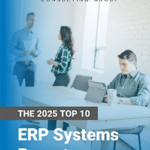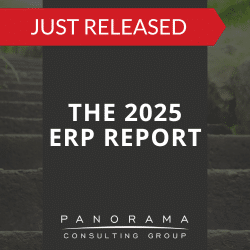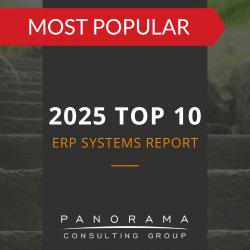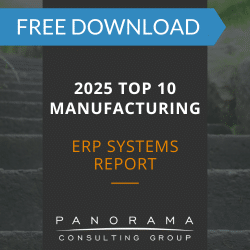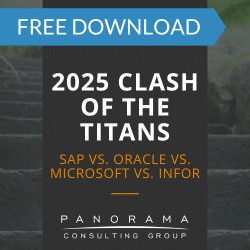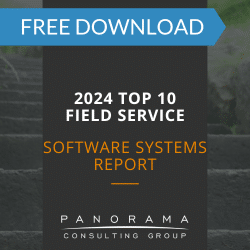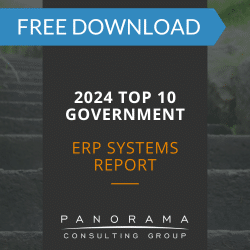- Cloud ERP systems evolve continuously, requiring employees to adapt to frequent updates and workflow changes.
- Without proper change management, ERP updates can lead to confusion and employee resistance.
- Organizations should leverage microlearning strategies and role-specific education.
- Change champions can help employees navigate system updates by providing peer-led guidance and hands-on support.
- Tracking ERP adoption metrics ensures continuous improvement in user proficiency and system utilization.
Cloud ERP has transformed the way modern businesses operate, but with all its advantages comes an overlooked challenge: the constant stream of updates, feature rollouts, and process refinements that demand ongoing adaptation from employees.
Unlike traditional on-premise ERP systems, which remain mostly static until an upgrade cycle forces change, cloud ERP evolves continuously. This creates a business environment where the learning curve never truly flattens.
The question isn’t whether your workforce will need to adapt—it’s how you will prepare them to do so successfully.
Today, we’re exploring how you can tackle the challenge of ERP system evolution by prioritizing continuous learning and ensuring long-term ERP proficiency across teams.
ERP Training Plan Success Story
We helped this manufacturer implement an ERP training strategy to increase user adoption of its new ERP system.
The Challenges of Cloud ERP Evolution
For many organizations, the result of ERP updates is unexpected friction. Employees who used to be able to perform a workflow with their eyes closed find that their familiar tools have changed overnight.
Soon, productivity dips, resistance to change builds, and the very system designed to enhance efficiency becomes a source of frustration.
Our independent ERP consultants have seen many clients underestimate the impact of system updates on end-users. The impact is particularly significant for employees in heavily regulated industries, where an incomplete understanding of evolving workflows can lead to confusion around new compliance procedures and anxiety about accidentally violating regulations.
Regardless of your industry, helping end-users adapt to ERP system updates requires a strategic approach: a shift in organizational culture, leadership engagement, and a tailored change management plan.
Navigating Change Management in Cloud ERP Implementations
Traditionally, ERP change management has been built around large-scale implementations. These models assume that once employees adjust to a new system, they can settle into a period of stability.
However, with cloud ERP, stability is no longer an option—continuous updates mean continuous change. Organizations must shift their approach from reactive adaptation to proactive engagement, ensuring that employees are not just keeping up with system changes but actively leveraging them for competitive advantage.
By embedding the following change management strategies into daily operations, you can shift from a culture of resistance to one of continuous learning and innovation.
1. Establishing an ERP Adaptation Team
Rather than relying solely on IT or external consultants, businesses must form cross-functional teams to monitor ERP updates, assess their impact on workflows, and communicate necessary adjustments to employees.
This team should include representatives from finance, operations, HR, and IT to ensure that each department’s unique needs are addressed. Their role extends beyond technical assessments—they should actively work to minimize disruption and maximize efficiency with each update.
2. Building a Microlearning Culture
Most modern ERP systems include features to support continuous learning. However, by themselves, these features lack company-specific context.
We recommend developing customized training materials and internal knowledge bases. Consider the following strategies:
- Creating role-based guides tailored to finance, HR, and operations teams.
- Using peer-led knowledge sharing, where experienced employees document best practices.
- Hosting monthly “ERP Update Clinics” to discuss new features and resolve pain points.
3. Empowering Change Champions
Resistance to change often arises when employees don’t fully understand how updates impact their specific roles or fear that new processes will disrupt their workflows.
One of the most effective ways to combat this is by selecting experienced employees from each department to serve as change champions. These individuals act as internal advocates for user adoption. They receive early access to updates, participate in testing new features, and serve as go-to resources for colleagues navigating system changes.
For instance, a pharmaceutical company might leverage change champions to give employees direct access to knowledgeable peers who understand both the manufacturing ERP system and their daily challenges. This would increase adherence to updated compliance procedures and help employees use automation features in their quality control workflows.
How to Build Long-Term ERP Proficiency
Enhancing cloud ERP proficiency requires a long-term commitment, driven by leadership, to ensure that system adoption is an ongoing organizational imperative.
1. Tailor ERP Training to Specific Roles and Workflows
One of the biggest mistakes organizations make is relying on generic, one-size-fits-all training programs that fail to address employees’ actual workflows. To ensure training is relevant and actionable, organizations should develop role-based learning paths.
For example, finance teams should focus on real-time reporting and compliance tracking, while supply chain managers need hands-on experience with automated inventory and forecasting tools.
Expert Insight
Vendor-provided training materials focus heavily on system navigation and technical features but rarely explain how updates affect role-specific tasks. The consultants on our Software Expert Witness team have seen many organizations rely too heavily on vendor-provided training materials. We recommend creating internal learning resources that align training with actual workflows. These materials should be continuously updated to reflect evolving system features and business processes.
2. Reinforce ERP Proficiency from the Top
One of the most effective ways to do this is by communicating key information, such as:
- How new updates will impact individual roles, in terms of requiring new data input methods or introducing additional approval steps in key processes.
- Why certain new features are essential to customer satisfaction, regulatory compliance, or supply chain efficiency.
- How employees can integrate new functionalities into daily operations, such as using predictive analytics to optimize inventory replenishment.
In addition to communication, incentives can also increase buy-in. Employees who actively engage with new functionalities and contribute to process improvements should be recognized and rewarded.
For example, you might offer performance incentives, certifications, or career advancement opportunities to employees who actively enhance their ERP expertise.
3. Track ERP Proficiency and Adoption Metrics
Measuring adoption and proficiency is essential for sustained success. Leaders should track key metrics, such as system utilization rates, employee feedback on usability, and productivity improvements linked to ERP updates.
These insights allow organizations to refine training programs, identify areas of resistance, and ensure that change management strategies remain aligned with business objectives.
Learn More About Adapting to ERP System Updates
The always-evolving nature of cloud ERP means that organizations that fail to prepare employees for continuous change risk inefficiencies, resistance, and a diminished return on their investment.
Our change management consultants can help you create a long-term roadmap for ERP proficiency. Contact us below to learn more.
